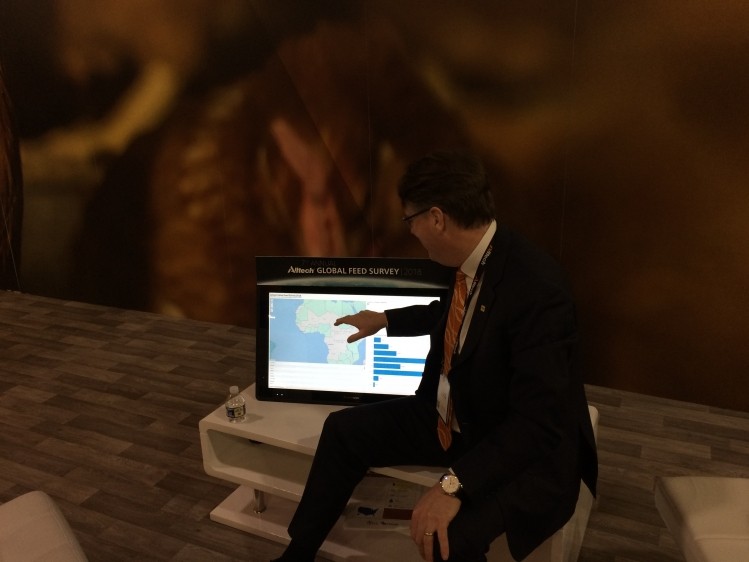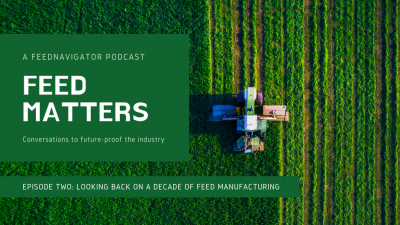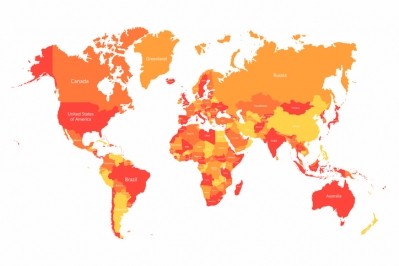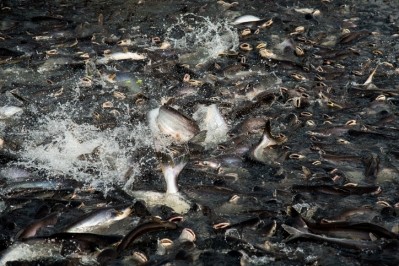Special Edition: Reports from IPPE
Beef, aqua trends see mixed results by country in feed production survey

The Kentucky-based feed additives company released the global feed survey results in January, but we sat down with Aidan Connolly, chief innovation officer, Alltech, at IPPE to hear more about some of the species-level trends for feed production.
“Feed production in the world is up 2%,” he said. “We say it’s up 2%, in reality, we’ve probably produced this year 3-4% more meat than we did the previous year because we’ve got to account for efficiencies and we’ve got to account for the extra feed production.”
Beef by the numbers
Overall, about 79,4m tons of feed for beef cattle were generated in 2017, the company reported. However, the amount is down about 1% from last year and there were declines in several regions including Latin America and Africa.
There was about 4% growth in beef feed production in the US and 5% in the Middle East, however, it dropped by 9% in Latin America, 6% in Asia-Pacific and 15% in Africa, the company reported.
If animal production does not increase, it would be typical for feed production to drop 1-2% a year as the genetic capacity of production animals increases, said Connolly. The same amount of beef would be produced with less feed.
“Beef has gone done – I wouldn’t view that as catastrophic for the beef industry, I think it’s just a short-term trend,” he said. “But, the long-term trend, I think is still toward white meat – growing consumption of broilers is considerable, and pigs, pork to a lesser degree.”
There does appear to be a possible shift away from beef and beef feed production, which could be a concern for the industry, he said. Public discussion of potential drawbacks in eating red meat continues and has raised concerns about poor feed conversion and environmental effect.
“They’ve tried to be much more purposeful in explaining the advantages of beef – they eat feed ingredients that humans can’t eat, they can go to parts of the world where we can’t grow other animals, but nonetheless the Meatless Monday tends to be particularly focused on the red meat side,” he said.
The industry also has been growing more slowly in the last few years than other species production has, said Connolly. “I would absolutely say that I wouldn’t be surprised to see it decline next year even if beef consumption stays the same level,” he added.
“There are some good signs in terms of beef consumption around the world, but we go back to this feed business being sometimes the canary in the coal mine,” he said. “It detects the problems before you see them, and I would say there are definitely longer-term issues for the beef industry globally.”
Aquafeed trends
On the aquaculture side, 2017 offered more of a mixed result, said Connolly. Total production of aqua feed saw an increase of 0.29%, based on reductions a few key countries, but, outside of those areas, production has been growing.
Production of aquafeed in China three years ago was about 20-21m tons, he said. By 2017, it dropped to 15.5m tons.
“In our first five surveys the aqua feed business was growing at 5% a year, and the last two years it hasn’t grown,” he said. “Last year we thought it was a blip, this year we saw it again.”
“It is growing outside of China, Vietnam and Asia,” he said. But, Asia accounts for about 70% of the world’s aqua feed production, he added.
“When they have a sneeze, everyone else gets a cold, because they are such heavyweights in the production of feed globally,” said Connolly.
China has had several challenges to its production in recent years, he said. During the Olympics in Beijing, athletes were asked not to eat the fish because of the degree of contamination and antibiotics found.
“A lot of the fish are grown in ponds and we know the water is quite contaminated with heavy metals cadmium, mercury, arsenic, and fish tend to be extremely good at hyper accumulating heavy metals,” he said. “Even off-shore, some of the farms that are off the shore, the waters just aren’t that clean they’ve had big issues.”
Some regions have seen algae blooms and the government has been stepping up efforts to close down small producers, in a manner similar to what as seen in the pork production industry, he said.
“If you go down to the Guangzhou area, they’ll typically have a pig farm connected with a fish farm – the manure comes straight out of the pig farm and straight into the pond and is consumed by the catfish and that’s how they grow the catfish,” said Connolly. “If you’re using heavy levels of zinc oxide, if you’re using traditionally very high levels of antibiotics – again fish aren’t just getting antibiotics from what they’re being fed – but also perhaps from … what they’re consuming from pigs. So lots of different factors mean that the government is focused on that.”
Even if there is a move toward larger aqua farms and production in the future, feed use may not return to the same levels, as those facilities will likely be more efficient, he said.
Looking forward, it is hard to predict feed production in aquaculture, he said. However, with global economies improving there is an expectation that more people will want to eat more protein and that will require more feed production.
“I would suspect at some stage the percentage of influence of Asia on aquaculture is diminishing because of China, and we know it’s growing in the rest of the world,” he said. “It’s growing by about 2%, so I’d be optimistic that we could see growth again in aqua, but I don’t see us growing at 5 to 8% coming back anytime soon.”








